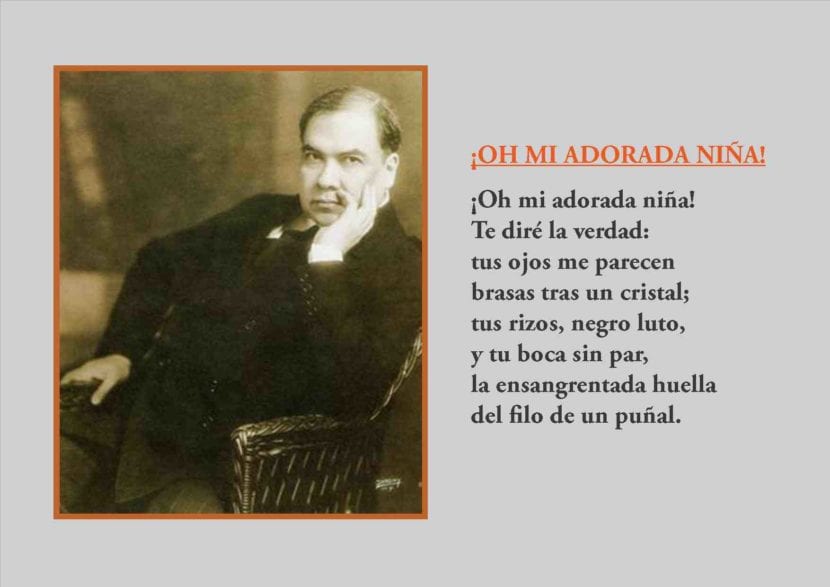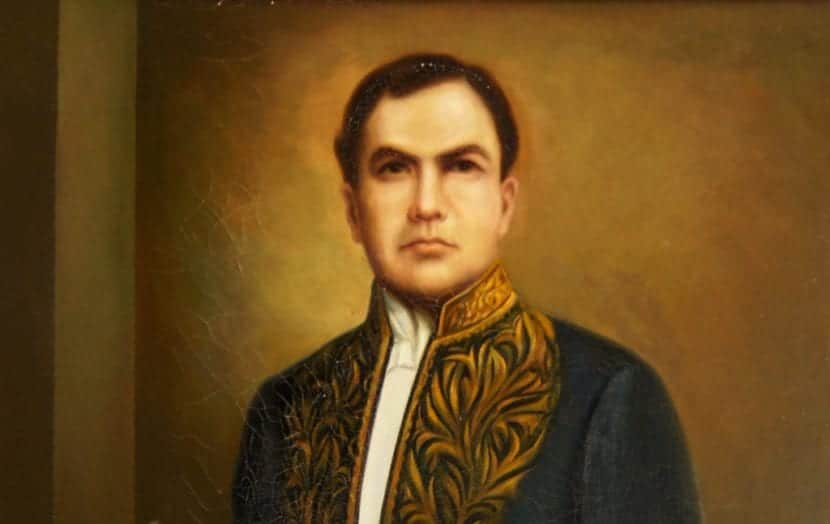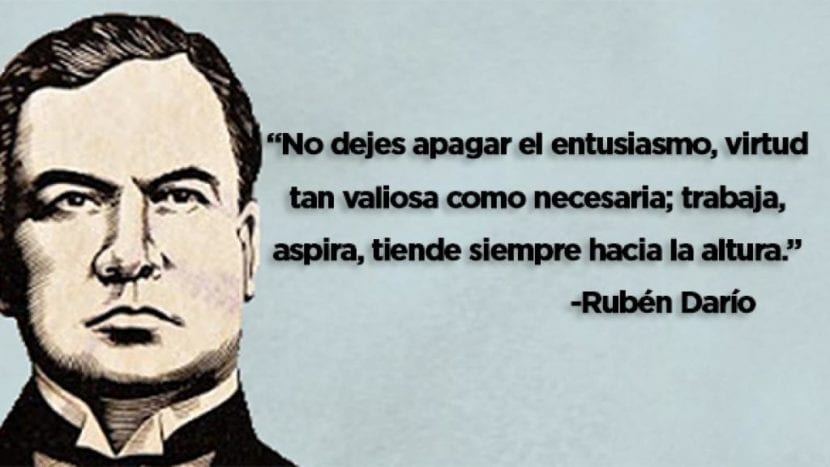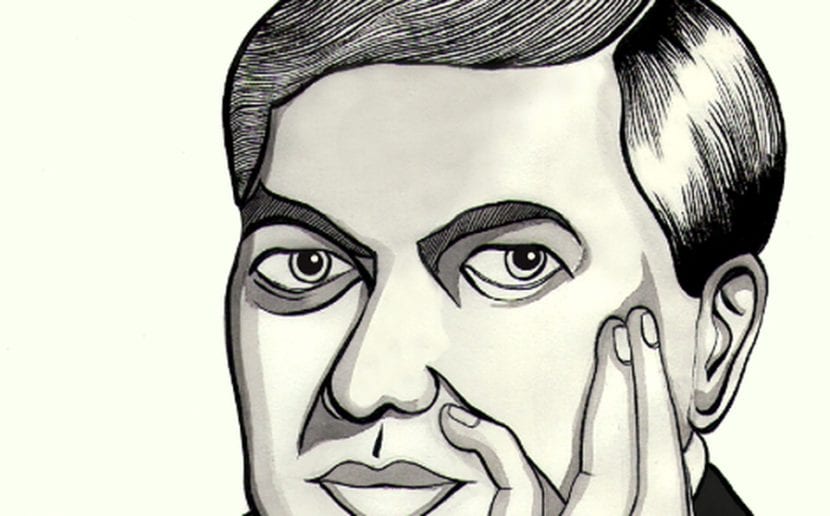
Poem by Rubén Darío.
"Poemas Rubén Darío" is one of the most common searches on Google, and it is not in vain, the talent of this poet was notorious. The writer was born in Metapa, Nicaragua, on January 18, 1867. He became known in Latin America thanks to his poetry —a talent that he demonstrated from an early age—, although he also stood out as a journalist and diplomat. Félix Rubén García Sarmiento is his full name; he adopted the surname Darío due to the fact that the members of his family, "los Daríos", were known in that way.
The chroniclers point to the Salvadoran Francisco Gavidia as one of their greatest influences, as it led him in the adaptation of the French Alexandrian verses to the metric of the Spanish. The truth is that Rubén Darío is considered by specialists as the most prominent representative of literary modernism in the Spanish language and his name is among the greats of recent Latin American fiction.
Youth
The author's biography is very extensive. Rubén received a humanistic training, was an avid reader and a precocious writer. At the age of 14 he made his first publications in the León newspaper; in those first poems he expresses his independent and progressive point of view, always in favor of democracy. In 1882 (at the age of 15) the young Rubén made his first trip to El Salvador, as a protégé of a diplomatic delegation.
At the age of 16, he was already a contributor to different newspapers in Managua. In 1886 he moved to Chile to gain experience as a journalist in print media such as The time, Freedom y The Herald; the first two from Santiago and the last from Valparaíso. In this South American country he met Pedro Balmaceda Toro, who introduced him to the highest intellectual, political and social circles of the nation that left their influence on the Nicaraguan poet.
Valparaíso was where the collection of poems was published BLUE, appreciated by literary critics as the starting point of modernism. Additionally, this work gives him enough merits to become a correspondent for the newspaper. The Nation of Buenos Aires. Then, between 1889 and 1892, he continued his work as a journalist and poet in several Central American countries.
From 1892 he served as a member of the Nicaraguan diplomatic delegation in Europe, in the IV Centenary of the Discovery of America. They were times of contact with the bohemian circles of Paris. A year later he returned to South America, he remained in Buenos Aires until 1896 and there he published two of his consecrating works - definitions of modernism in the Spanish language. The rare y Profane prose and other poems.

Portrait of Rubén Darío.
Marriages and diplomatic positions
Love relationships and close family disappearances marked much of his literary inspiration. When he was 23 years old, Rubén Darío married Rafaela Contreras Cañas in Managua during June 1890. A year later his first-born was born and in 1893 he became widowed because Contreras died after a surgical intervention.
On March 8, 1893 he married - forced, according to the chroniclers - with Rosario Emelina. Apparently, Rubén Darío was set up by his wife's military brothers. However, the Nicaraguan poet took advantage of his stay in Madrid as a correspondent for the Buenos Aires newspaper La Nación for, from the year 1898, to alternate residence between Paris and Madrid.
In 1900 he met Francisca Sánchez in the Spanish capital, an illiterate woman of peasant origin whom he married civilly and had four children (only one survived, Rubén Darío Sánchez, "Guincho"). The poet taught him to read with his friends (living in Paris) Amando Nervo and Manuel Machado.
From his various trips through Spain he collected his impressions in the book Contemporary Spain. Chronicles and literary portraits (1901). By that time, Rubén Darío had already aroused admiration in prominent intellectuals who defended Modernism in Spain, among them were Jacinto Benavente, Juan Ramón Jiménez and Ramón María del Valle-Inclán.
In 1903 he was appointed Consul of Nicaragua in Paris. Two years later he participated as part of the delegation in charge of resolving a territorial dispute with Honduras. Also, during 1905 he published his third capital book: Songs of life and hope, swans and other poems.
After that Rubén Darío participated in the Third Pan American Conference (1906) as secretary of the Nicaraguan delegation. In 1907 Emelina appeared in Paris claiming her rights as a wife. So the writer returned to Nicaragua to file for his divorce, but to no avail.
Last years of Rubén Darío
At the end of 1907 he was appointed diplomatic representative of Nicaragua in Madrid by the government of Juan Manuel Zelaya, thanks to his renown as a poet in America and Europe. He held the position until 1909. Afterwards, he was between 1910 and 1913 in different positions and official missions in various Latin American countries.
In that period he published The life of Rubén Darío written by himself e History of my books, two autobiographical texts essential to understand his life and his literary evolution.
In Barcelona, he wrote his last transcendent collection of poems: I sing to Argentina and other poems (1914) Finally, after a brief visit to Guatemala, the outbreak of the Great War forced him to return to Nicaragua, where he died in León, on February 6, 1916. He was 59 years old.
Analysis of some of the best known poems by Rubén Darío
"Margarita" (In memoriam)
“Do you remember that you wanted to be a Margarita Gautier?
Fixed in my mind your strange face is,
when we had dinner together, on the first date,
On a joyous night that will never return
"Your scarlet lips of cursed purple
they sipped the champagne from the sweet baccarat;
your fingers uncovered the sweet Margarita,
< > And you knew he adored you already!
“Later, oh, flower of Hysteria! You were crying and laughing;
your kisses and your tears I had in my mouth;
your laughs, your fragrances, your complaints, they were mine.
"And on a sad afternoon of the sweetest days,
Death, the jealous one, to see if you loved me,
Like a daisy of love, it defoliated you! ”.

Quote by Rubén Darío.
Meta
This is a work inspired by the love and grief of losing a loved one. Is found in Profane prose and other poems (1896). It is considered one of the precursor texts of Modernism in the Spanish language, characterized by its cultural versatility, precious language and formality.
"Sonatina"
“The princess is sad… what will the princess have?
Sighs escape from his strawberry mouth,
who has lost laughter, who has lost color.
The princess is pale in her golden chair,
the keyboard of its golden key is silent;
and in a forgotten vase a flower faints.
“The garden populates the triumph of the peacocks.
Talkative, the owner says banal things,
and, dressed in red, pirouettes the jester.
The princess does not laugh, the princess does not feel
the princess chases through the eastern sky
the dragonfly wanders from a vague illusion.
Are you thinking of the prince of Golconda or of China,
or in which his Argentine float has stopped
to see from his eyes the sweetness of light
Or in the king of the isles of fragrant roses,
or in the one who is sovereign of the clear diamonds,
or the proud owner of the pearls of Hormuz?
"Oh! The poor princess with the pink mouth
wants to be a swallow, wants to be a butterfly,
have light wings, under the sky fly,
go to the sun by the luminous scale of a ray,
greet the lilies with the verses of May,
or get lost in the wind on the thunder of the sea.
"He no longer wants the palace, nor the silver spinning wheel,
neither the enchanted hawk, nor the scarlet jester,
nor the unanimous swans in the azure lake.
And the flowers are sad for the flower of the court;
the jasmine of the East, the nelumbos of the North,
from the West dahlias and roses from the South.
"Poor princess with the blue eyes! ...".
Meta

Drawing by Rubén Darío.
"Sonatina" also comes from Profane prose. Demonstrates poetry with perfect meter, with an innovative way to develop your argument, with great detail on the chromatic and sensorial elements. Likewise, in this poem there appear Greco-Latin mythological figures and classic French Versailles elements used as resources to communicate their own feelings. It is a narrative work with an enormous emotional charge, told from the intimate and subjective perspective of the protagonist, a princess full of sadness.